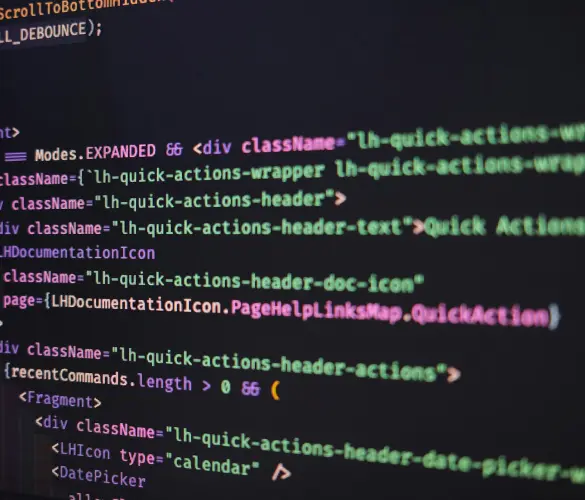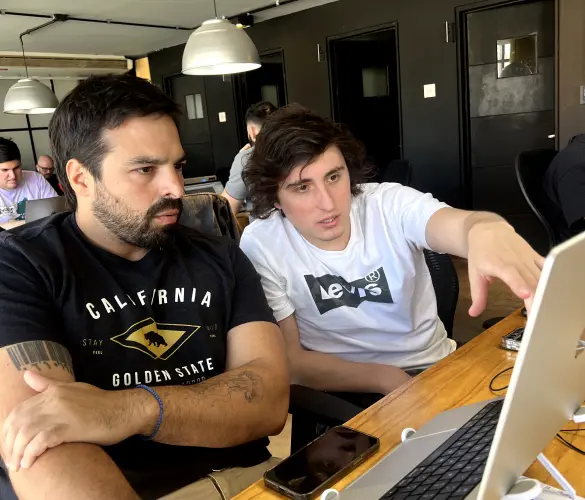- Blogs
- Detrás del Lienzo
- Time Management for Technical Leaders: 4 Techniques to Stay Focused and Organized
Detrás del Lienzo / 4 min de lectura
Time Management for Technical Leaders: 4 Techniques to Stay Focused and Organized

The tech industry is very fast-paced, especially when you’re a technical leader and have dozens of tasks to achieve daily. That is why, for technical leaders, time management skills are essential for staying productive and focused when balancing tasks and priorities.
Let’s explore the 4 time management skills I’ve found the most useful in my time as a leader in a WordPress development agency: time blocking, prioritization, delegation, and clear documentation.
4 Time Management Strategies for Technical Leaders
Technical leaders perform many roles every day. One moment you’re debugging code; the next, you’re helping build a project roadmap for a client. Without a clear system to manage these responsibilities, it’s easy to get caught up in reactive tasks and lose sight of long-term goals.
While I can’t claim to be the ultimate expert in time management, I’ve learned to apply several strategies, and they’ve worked very well for me.
These are the 4 time management strategies I use most often to complete tasks on time.
Time Blocking
Time blocking is dividing your day into dedicated slots for specific tasks. For example, a technical leader’s day could look like this:
- Morning: Address high-priority technical challenges.
- Afternoon: Participate in team meetings or review project progress.
- Late afternoon: Focus on deep work for coding or planning.
Having days already structured in advance helps me reduce decision fatigue and keeps me focused by reducing the constant context-switching that happens when I don’t plan my days.
Prioritization
While I always strive to get every daily task done, it’s also important to recognize that not all tasks are equally important and urgent. Circumstances will always make some tasks more or less urgent, and I need to find ways to prioritize them accordingly.
There are many tools for prioritizing tasks, but one I would recommend to beginners is Eisenhower’s Matrix.
It’s a time management tool that helps categorize your remaining tasks into priority brackets to figure out which to do first, which to do later, which to leave to others, and which to discard.
These are the categories of Eisenhower’s Matrix:
- Urgent and important: Handle immediately.
- Important but not urgent: Schedule for later.
- Urgent but not important: Delegate.
- Neither urgent nor important: Eliminate.
Your experience with these tasks and communication with your team and clients will help you determine which task falls into which category.
Delegation
Delegation is an indispensable skill for technical leaders. However, knowing when to delegate can be a challenge. Consider the following factors when deciding whether to delegate a task:
- The task is recurring and not very meaningful. You could delegate tasks that happen regularly to free up time you can spend on more strategic tasks.
- The task matches one of your team member’s interests and expertise. Delegate tasks that align with a team member’s skills or passions to ensure that the ideal team member is the one performing the task.
- The task supports a team member’s goals. Delegate work that supports a team member’s professional development.
- The task doesn’t require your unique skills. Handoff duties that don’t specifically need your expertise to focus on higher-priority objectives.
Obviously, you don’t want to offload responsibilities to every other team member unfairly, but you also don’t want to find yourself performing a task that is low-priority and doesn’t require your unique skills.
Use the factors above and whichever other factor you recognize throughout your experiences to figure out which tasks you’re better off delegating to others.
Clear Documentation
Maintaining organized and concise project documentation, such as a tech brief, ensures that everyone understands the project’s technical direction, goals, and priorities.
A well-crafted tech brief includes:
- Project objectives. What the team aims to achieve.
- Technical guidelines. Tools, frameworks, or standards to follow.
- Milestones. Clear checkpoints to measure progress.
- Responsibilities. Specific roles and expectations.
When documentation is thorough and accessible, delegating tasks becomes significantly easier, as team members have a clear reference point.
Our organization uses tools like Notion to centralize and structure all project details, making collaboration seamless and efficient.
Work on Your Communication, Too
Clear communication is the glue that holds a team together, especially when managing large projects. Focus on engaging in regular, structured communication to help avoid misunderstandings and foster a culture of transparency.
Follow these tips to improve communication with your team:
- Set expectations early. Use team meetings or project kick-offs to clarify goals, roles, and deadlines.
- Hold regular check-ins. Weekly meetings or progress reviews keep everyone on the same page and provide opportunities to address challenges.
- Provide constructive feedback. Offer actionable suggestions to help team members grow while maintaining morale.
- Encourage open dialogue. Create an environment where team members feel comfortable sharing ideas, concerns, and feedback.
Improve Your Time Management Skills to Improve Focus and Organization
Working on your time management skills can be a game-changer for you as a technical leader and help you improve productivity by reducing the effect of factors that keep you unfocused and disorganized, like having to go through too many tasks that aren’t particularly important, meaningful, or require your unique skills.
Hopefully, you found my 4 strategies useful, and you can start using them on your day-to-day to stay focused on what matters and make your work more structured.
If you found this post useful, read our blog and developer resources for more insights and guides!
Artículos relacionados

Negocios / 7 min de lectura
Negocios / 7 min de lectura
¿Storyblok o WordPress para construir tu sitio? Nuestra experiencia como agencia
Con la aparición de nuevos CMS cada año, te podés preguntar si tu sitio se beneficiaría más con el emergente Storyblok o con WordPress, el veterano CMS que potencia casi…
Leer más
Detrás del Lienzo / 5 min de lectura
Detrás del Lienzo / 5 min de lectura
Cómo la Automatización Optimiza la Gestión de Productos en el Desarrollo de WordPress
Nuestra experiencia en desarrollo de WordPress nos enseñó que cada proyecto ofrece la oportunidad de optimizar procesos y reducir la carga de trabajo manual. Este enfoque nos ha llevado a…
Leer más
Detrás del Lienzo / 7 min de lectura
Detrás del Lienzo / 7 min de lectura
Cómo liderar y desarrollar líderes en agencias de WordPress: el enfoque de un CTO
Ser líder implica tomar decisiones, pero también empoderar a otros para que las tomen. Como CTO de una compañía de desarrollo web enfocada en WordPress, aprendí, a veces de manera…
Leer más
Detrás del Lienzo / 6 min de lectura
Detrás del Lienzo / 6 min de lectura
Cómo crear un protocolo de mantenimiento de WordPress para tus clientes
Establecer y ejecutar un protocolo de mantenimiento continuo para WordPress requiere comunicación clara y planificación. Cuando estos elementos faltan, pueden surgir consecuencias no deseadas como problemas operacionales, tiempo de inactividad…
Leer más
Detrás del Lienzo / 11 min de lectura
Detrás del Lienzo / 11 min de lectura
Cómo la implementación de un panel de control para clientes mejora la transparencia en proyectos de WordPress
Estuvimos utilizando un panel de control en tiempo real para clientes para mejorar la transparencia, hacer el seguimiento del progreso y aumentar la eficiencia en proyectos de desarrollo en WordPress.…
Leer más